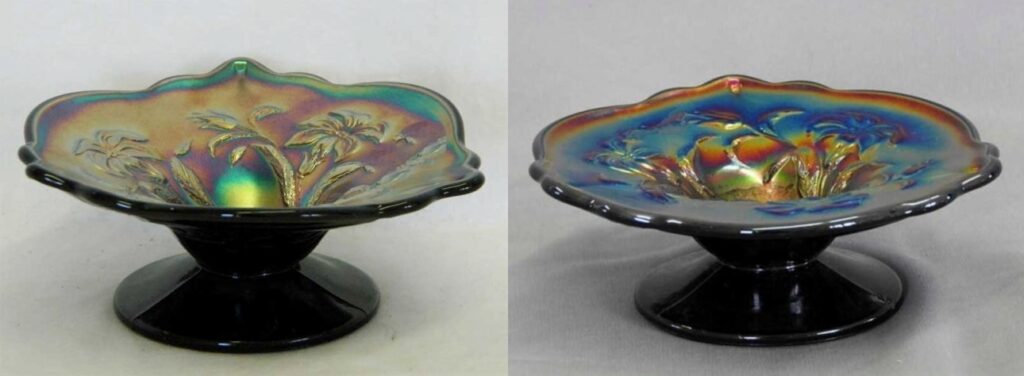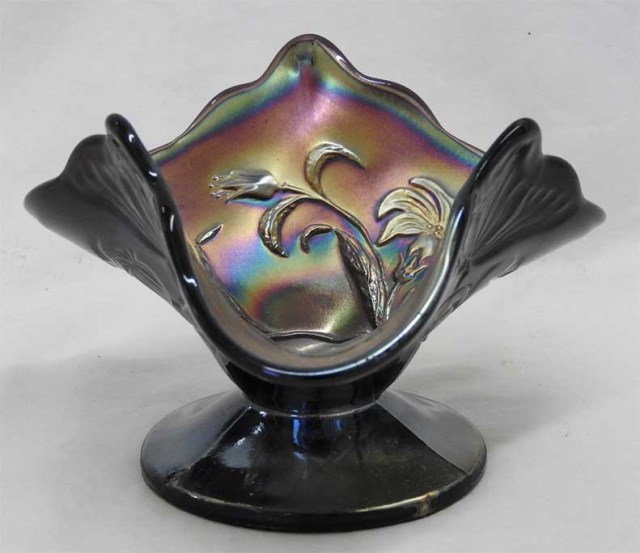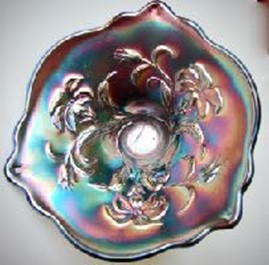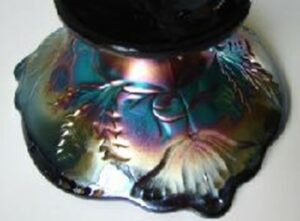Amaryllis
By Barb Chamberlain
The Amaryllis compote was a product of the Dugan Glass Company in the early 1900’s. It was one of their earliest patterns as it was made in pattern glass preceding the advent of carnival glass by the company. It was pictured in a 1907 catalog, under the label Intaglio Assortment. Often the producers of carnival glass used molds that were previously available in pattern glass to test the waters of carnival glass and the public’s acceptance and purchasing of the product. When they found that carnival glass was popular, they had new molds made for their products.
This compote is a very small (some would say miniature) compote. It is basically the size of a sherbet. There was only one mold that was used to make the different shapes known in the pattern – deep round compote, points up (tri-corner) compote, ruffled compote, and stemmed plate. The deep round piece was probably the shape that came from the mold.
There is a lot going on with patterns on such a small piece. This unique piece features the Amaryllis pattern on the interior, the Poppy Wreath pattern on the back of the bowl, and even a trilogy of leaves on the base. Sometimes the back was iridized and other times not.
The interior pattern features three Amaryllis blossoms.
The Poppy Wreath pattern is featured on the back of the bowl. Three poppy flowers reside on the exterior.

And to complete the trilogy, the base pattern features three leaves circling a three leaf clover center.
Colors of those that have been sold have been amethyst, purple, marigold, and black amethyst. Of course, it is the interpretation by the auctioneers as to the differences of amethyst or purple, and even black amethyst. I’m sure at the time of manufacture the formula was probably the same for all three of the colors, but the measurements might have been off when the chemicals were included with the glass batch. On the Carnival Glass 101 site, it is stated that white and cobalt blue Amaryllis pieces are known.

Above left is the deep plate or bowl shaped Amaryllis compote. As you can see, the plate version (right) is much flatter than the deep plate or bowl version.

The deep round compote is shown above in marigold.

The points up version is shown above.
If you have a shape that isn’t featured, or a white or cobalt blue piece, please take photos and send them to me at dbcham@iowatelecom.net or send them to 124 E. Honey Creek Dr., Manchester, IA 52057. I would like to include them in a future issue of The Carnival Pump.
Photos courtesy of Seeck Auctions and the editor.
This article first appeared in the ICGA Pump in the December 2020 issue and is reprinted with permission.


